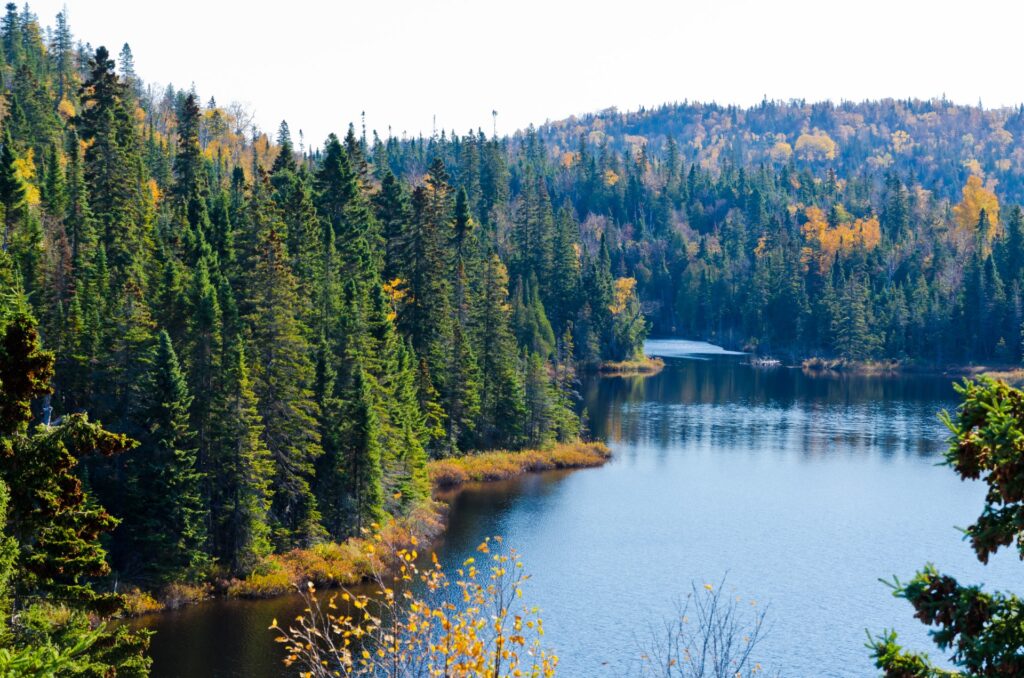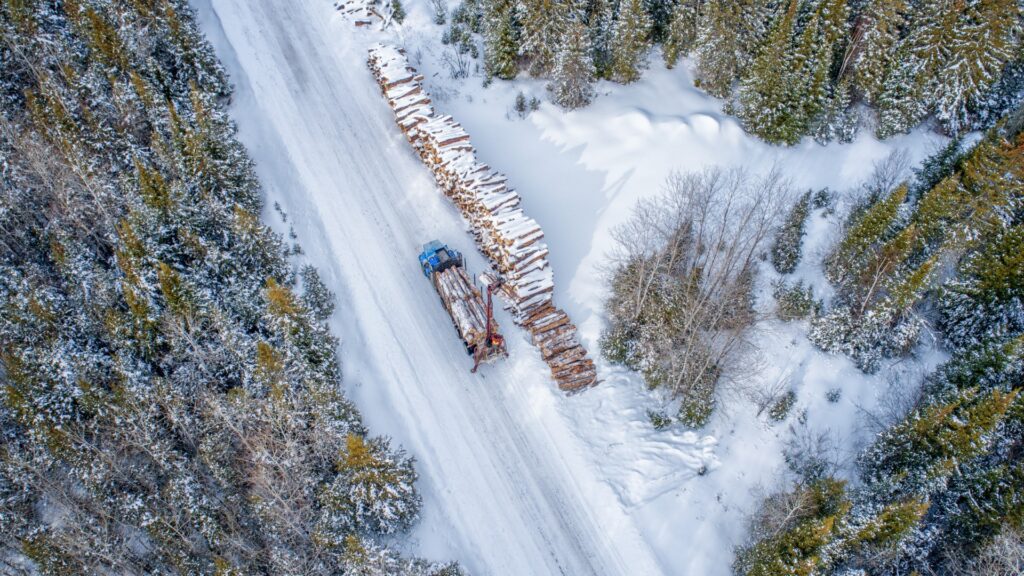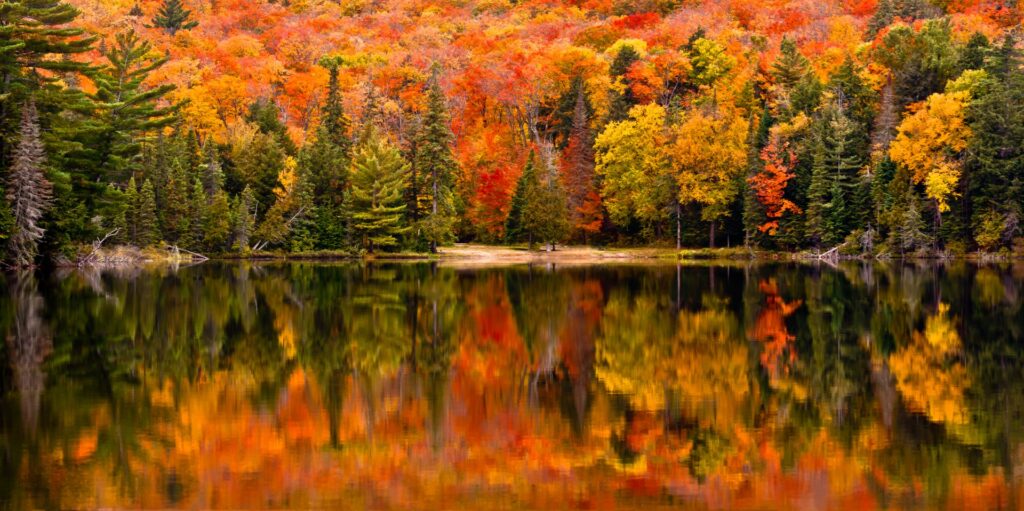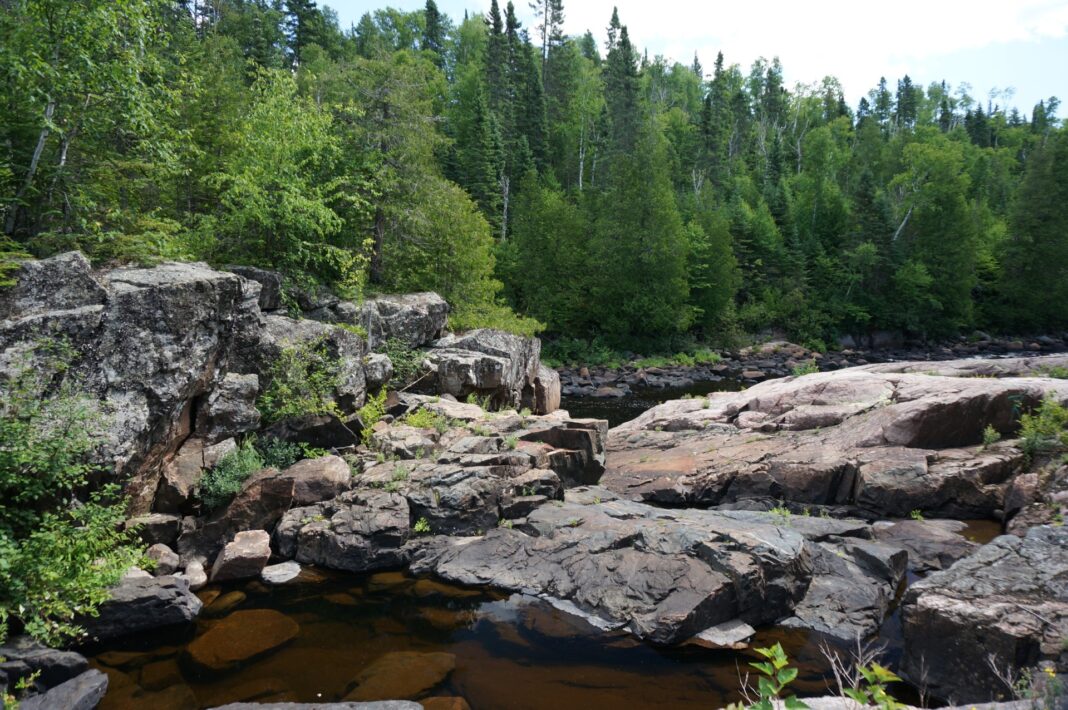The province of Ontario’s land comprises 66 per cent of forest, according to Ontario.ca. Most of this is in the Boreal forest region, on the Canadian Shield. There are three other main forest regions in Ontario: the Hudson Bay Lowlands; the Great Lakes-St. Lawrence forest; and the deciduous forest.
The Hudson Bay Lowlands contain the northernmost forest in Ontario and cover 26 million hectares. The region is mainly tundra and wetlands with thousands of small lakes and ponds and only 24.2 per cent forest cover. The trees are sparse, slow-growing and mainly stunted tamarack and black spruce. White birch, dwarf birch and willow are common deciduous trees in the region.

The Boreal forest region is the largest in Ontario with 50 million hectares and has 74 per cent forest cover. The main conifer species are black spruce, white spruce, jack pine, balsam fir, tamarack and eastern cedar and the main deciduous species are poplar and white birch.
The Great Lakes-St. Lawrence forest region is 20 million hectares. The 62 per cent forest cover makes it the second largest forest region in Ontario. Trees here include a mixture of coniferous species, such as white pine, red pine, hemlock and white cedar. Deciduous trees include yellow birch, sugar and red maples, basswood and red oak.
The smallest, and southernmost forest region in Ontario is the deciduous forest region. It only covers 3 million hectares, and much of it has been cleared to make room for agricultural operations and urban centres. The region only has 10.3 per cent forest cover, but it is home to diverse tree species. In addition to those found in the Great Lakes-St. Lawrence region, the Deciduous forest region also has black walnut, butternut, tulip, magnolia, black gum, oaks, hickories, sassafras and red bud.

Nearly 90 per cent of Ontario’s forest is Crown land, which means that it is publicly owned and the government regulates its management. In order to harvest trees on Crown land, forest companies are required to get a Sustainable Forest Licence. They must also create and follow a forest management plan, pay fees and renew the forest after they’ve harvested trees. Each tree is carefully selected before it is cut down, and new trees are planted so that the forest never disappears.
The forestry industry helped create communities in Ontario, especially in the north. For example, the town of Espanola began with the Spanish River Pulp and Paper Company signing an agreement with the Ontario government in 1899 to begin logging operations in the area. The company built the town to house its loggers and pulp mill workers.
Some communities turned to the forestry industry after they realized the value of the surrounding trees. For example, although Kapuskasing started as a water stop along the National Transcontinental Railway, forestry became an important part of its history and identity. Kapuskasing went from being a water stop to a town when the government offered land in the area to people willing to farm it. The goal was to expand the north, but the growing season is short, which made farming difficult. Residents soon noticed that the area around town was abundant with black spruce trees. When the Spruce Falls Power and Paper Company Ltd. opened in Kapuskasing in 1920, it provided good jobs in logging camps and at the paper mill for many former farmers.
Harvested Ontario trees are used to produce a variety of products, such as lumber, flooring, doors, and trim for construction. They are also a crucial material to create furniture, toys, and wooden decorative pieces. For outdoor recreation, they are used for boats, paddles and firewood.

Ontario wood and wood products are also exported to countries around the world. According to Statistics Canada, the province’s top wood export is lumber made from coniferous trees and is exported to the United States, Japan, Belgium, Mexico, China, Taiwan, France, Pakistan, Trinidad and Tobago, Dominica, and other countries.

Timber and paper products are not the only reason that the forests are an important part of Ontario’s culture. The forests are also home to maple trees, internationally aligned with Canada’s identity. One of the reasons these trees are so important is the creation of maple syrup. According to ontariomaple.com, it takes approximately 40 litres of sap to make one litre of maple syrup. Ontario produces nearly one million litres of maple syrup per year.
Ontario forests also provide an ideal environment for fishing, hunting and camping. The province’s first provincial park, Algonquin Provincial Park, was established in 1893. Now, more than 10 million people visit Ontario provincial parks each year to hike, canoe and kayak, according to Ontario.ca. Many residents also enjoy going to private camps or cottages.
While provincial parks charge entrance fees and private camps and cottages can be expensive to buy and maintain, visitors can enjoy camping, hiking and many other recreational activities on much of its Crown land for free. No services are available on this land and generally it is not maintained. But, there are sometimes trails for ATVs in the summer and snowmobiles in the winter. This year, camping is not allowed due to COVID-19 until further notice.

As with many of its industries, Ontario is committed to researching innovative ways to make the forestry industry more sustainable so that residents and visitors can continue to enjoy the natural landscape for years to come. “I look forward to working with the forest industry, Indigenous partners, and municipal representatives to implement this strategy and build a bright future for the forest sector and the many people and communities who rely on it,” said John Yakabuski, Minister of Natural Resources and Forestry, in an announcement published in August 2020 about Ontario’s Forest Sector Strategy for sustainable growth.






